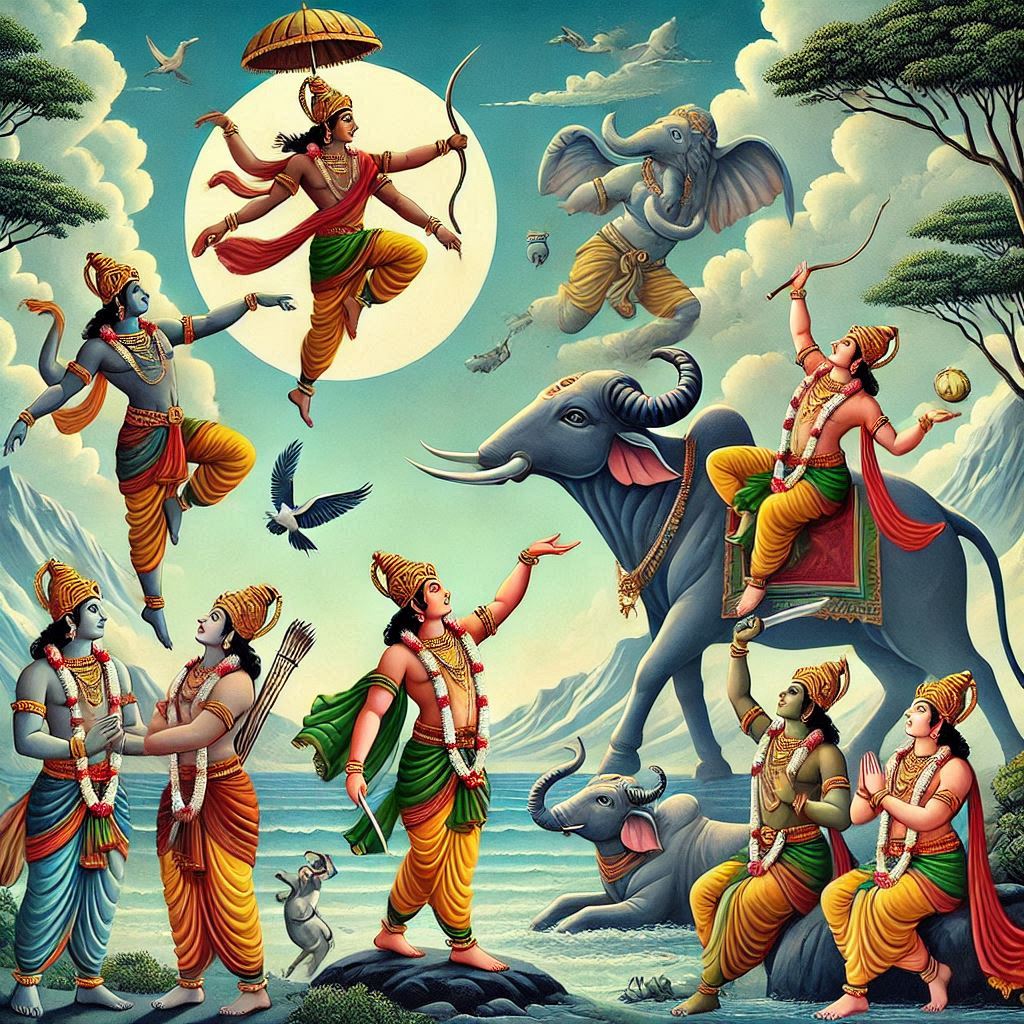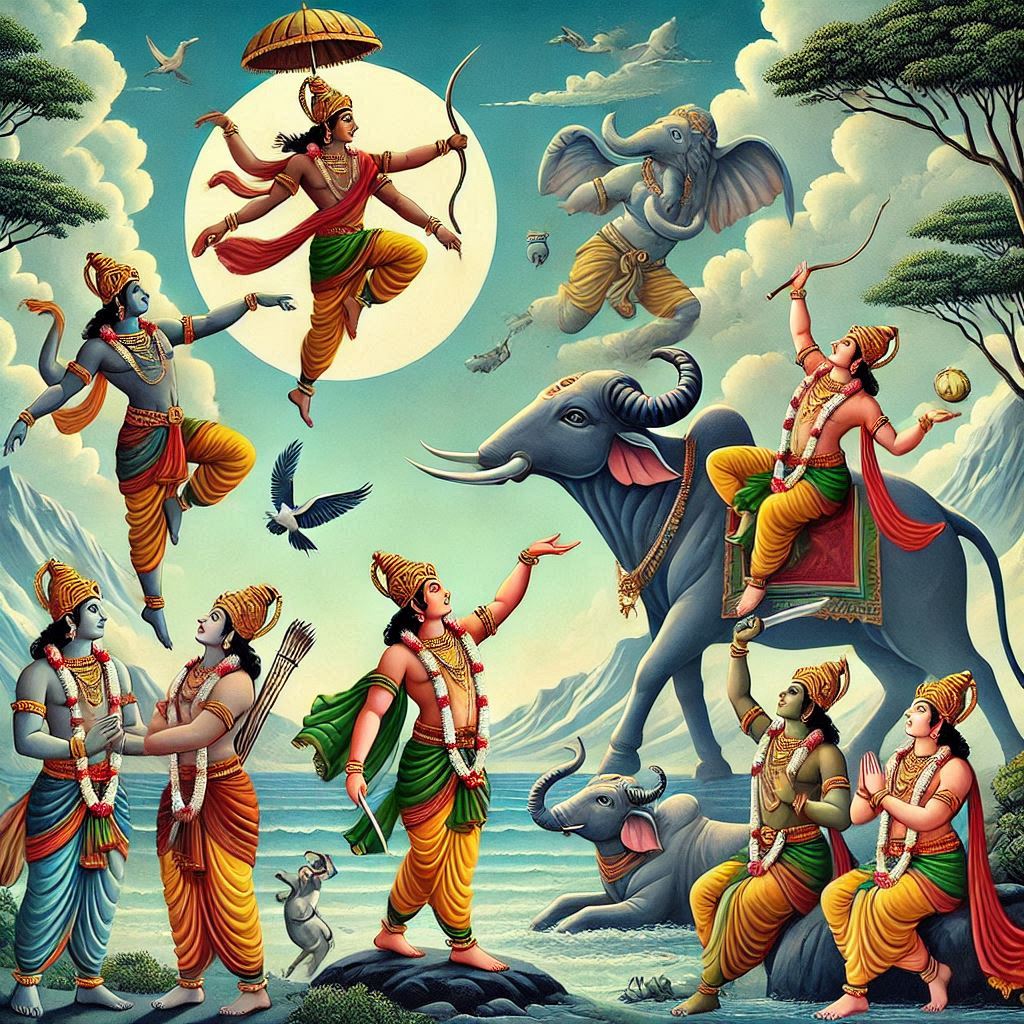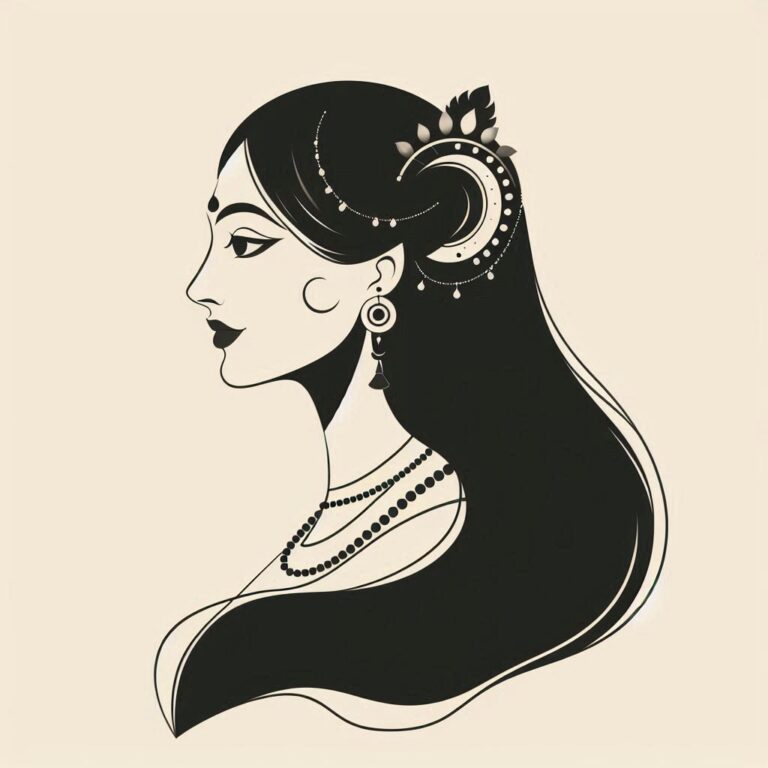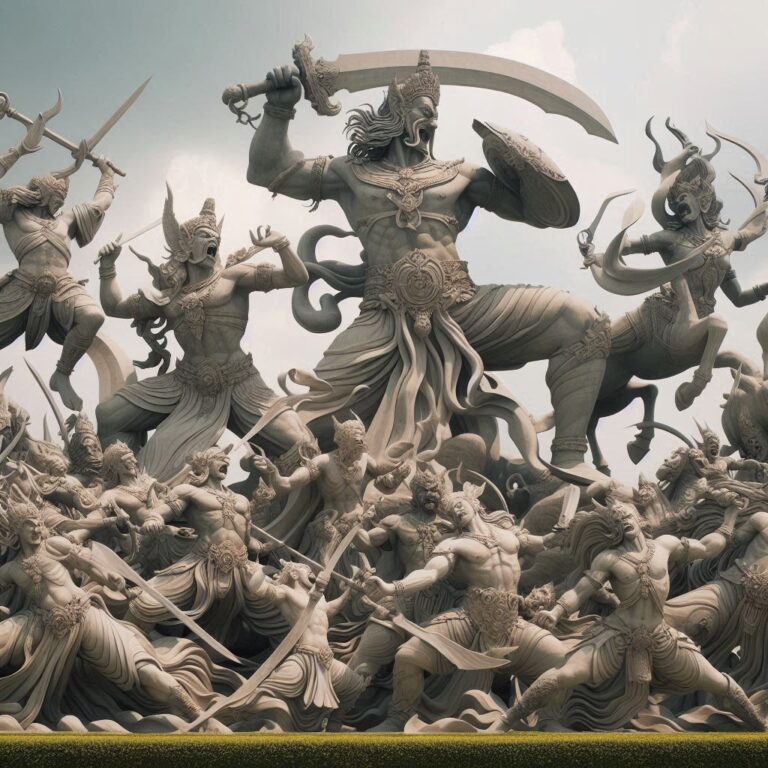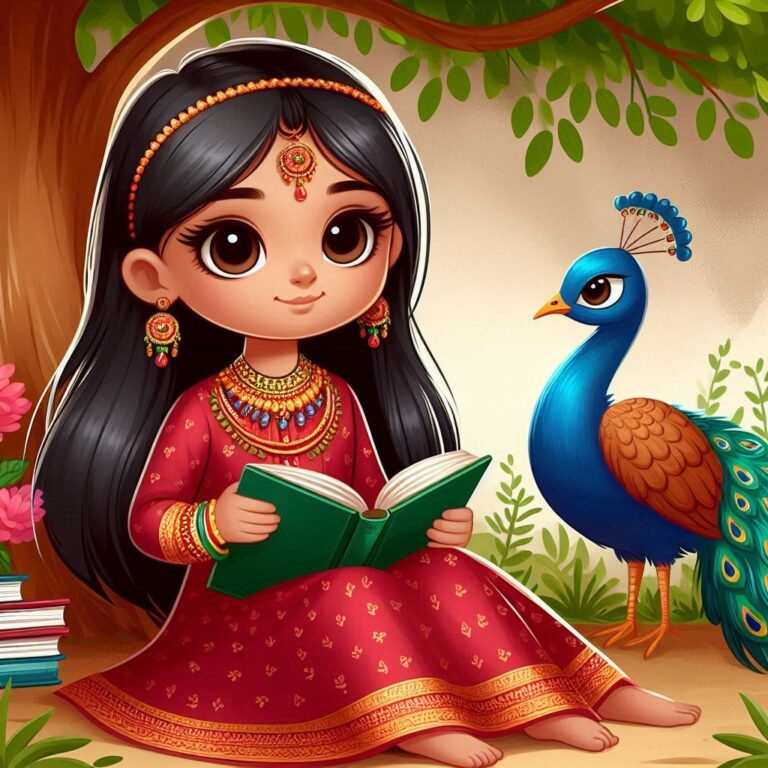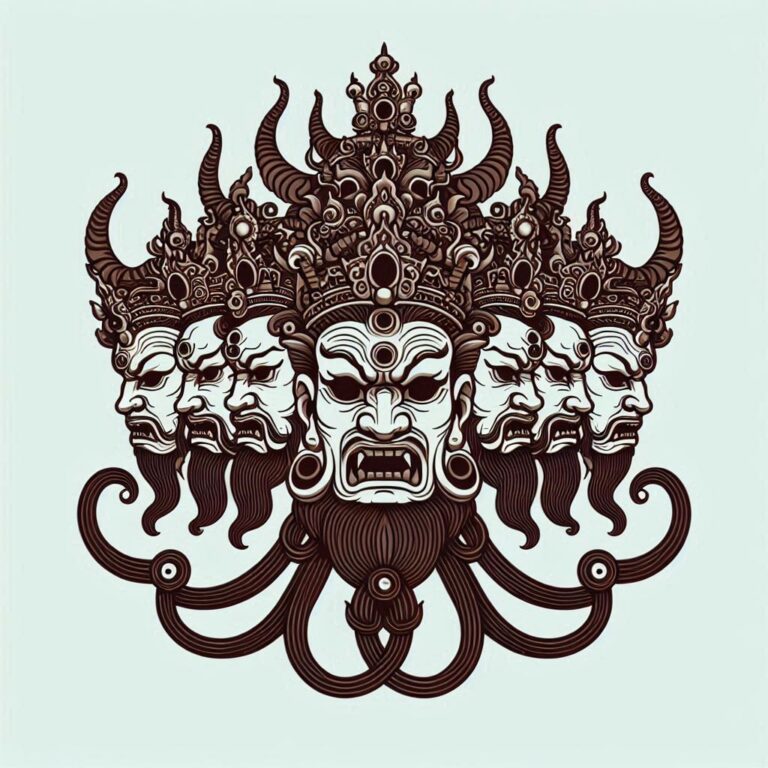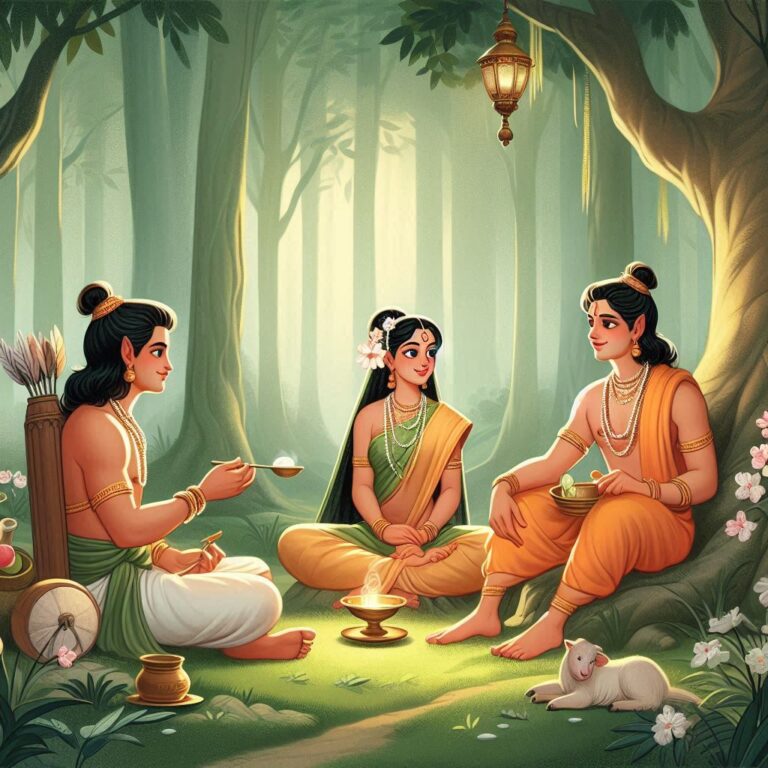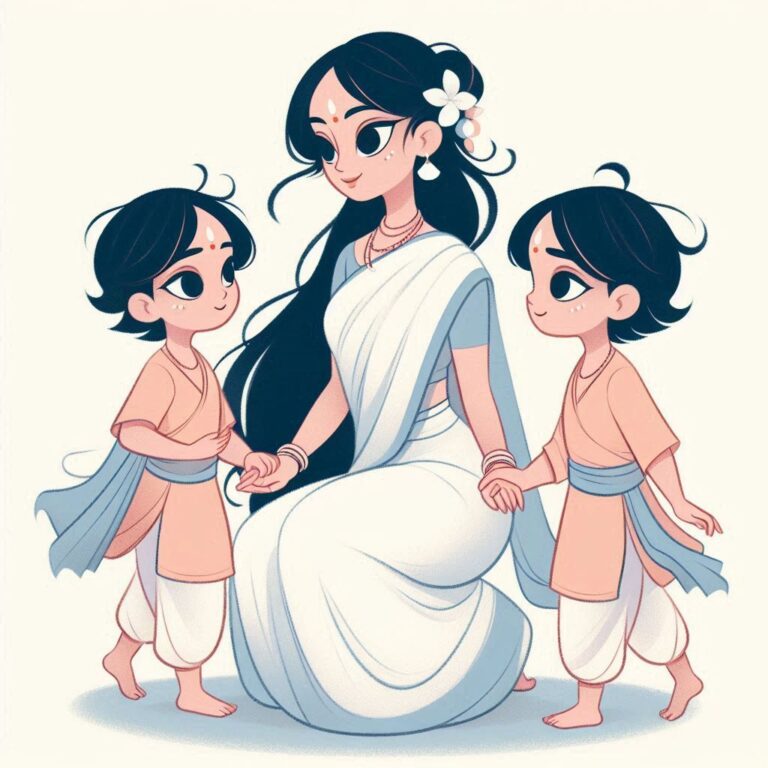Ramayan in Modern Art: Exploring Contemporary Artistic Representations
Ramayana in Modern Art: A Contemporary Exploration
The Ramayana, an ancient Indian epic, has been a profound source of inspiration for artists throughout history. It narrates the life and adventures of Lord Rama, his wife Sita, and his loyal companion Hanuman, while imparting timeless virtues about duty, honor, and love. Fast forward to today, and modern artists are reimagining this epic in innovative and contemporary ways. But how exactly does one transform a centuries-old narrative into a modern artistic expression? Intrigued yet? Let’s delve into this vividly colorful world of modern representations of the Ramayana!
The Ramayana: A Brief Overview
Before diving into how modern artists interpret this epic, let’s quickly recap what the Ramayana is all about. Traditionally attributed to Valmiki, it comprises around 24,000 verses divided into seven books or Kandas. The epic outlines Rama’s quest to rescue Sita from the demon king Ravana and is packed with moral teachings and deeper philosophical meanings about dharma (duty), karma (action), and bhakti (devotion).
Doesn’t that make your imagination run wild? From valiant battles to poignant emotional incidents, the Ramayana provides a treasure trove of stories just waiting to be told in new visual forms. But what does that look like in modern times?
The Evolution of Artistic Expression
From Tradition to Contemporary
Traditionally, the Ramayana has been expressed in various art forms like classical paintings, sculptures, dance, and even theatrical performances. Artists like Raja Ravi Varma depicted scenes from the epic with exquisite detail, showcasing the narrative’s grandeur.
But modern art is all about breaking boundaries, isn’t it? Contemporary artists visualize the Ramayana through mediums like graffiti, digital art, and installation pieces. The transformation of these age-old tales into modern contexts not only makes the art more relatable but also garners a wider audience.
Imagine walking through an art gallery and encountering a vibrant graffiti mural depicting Hanuman flying over a cityscape or a digital installation that immerses you in key events of the Ramayana through virtual reality. You’d step back and be like, “Whoa, this is not the Ramayana I grew up with!”
Stylistic Choices in Modern Representations
Modern artists sometimes deviate from the classical forms, opting instead for bold colors, abstract shapes, and even mixed media. This is where the element of perplexity comes in. You find yourself puzzled, yet intrigued by the piece’s meaning.
For instance, an abstract portrayal of Ravana might not just depict the demon king in his physical form but could symbolize the various “Ravanas” we encounter today—greed, ego, and hatred. Isn’t it fascinating how a character celebrated in one era can represent societal issues in another?
Notable Contemporary Artists and Their Works
Here are a few contemporary artists who have made waves with their unique interpretations of the Ramayana:
- Subodh Gupta: Known for his installation art, Gupta uses utensils and found objects to create pieces that reflect on the themes of loss and identity in the Ramayana.
- Anjolie Ela Menon: This artist’s vibrant paintings bring out the emotional depth of the Ramayana, particularly focusing on Sita’s resilience.
- Nikhil Chopra: His performances often weave elements of the Ramayana into his narratives, blending personal stories with mythological themes.
By employing diverse materials and styles, these artists create a dialogue between the old and the new, resonating with both traditional audiences and contemporary viewers.
The Impact of Technology on Modern Interpretations
In the digital age, technology plays a crucial role in how the Ramayana is perceived. From 3D animations to augmented reality experiences, tech-savvy artists are bringing the epic to life in astonishing ways. Imagine donning a VR headset and vividly experiencing the scenes of Rama’s exile or Hanuman’s leap to Lanka. It’s not merely art; it’s like living the story itself!
The Ramayana in Various Art Forms
1. Visual Arts
Contemporary visual artists have created striking interpretations using various media:
- Paintings: Artists explore vibrant colors and abstract forms to convey the emotional core of the Ramayana.
- Sculptures: Modern sculptures might reinterpret the figures of Rama, Sita, or Hanuman, highlighting their symbolic meanings.
2. Performing Arts
Modern dance and theater often incorporate elements of the Ramayana, presenting the story through contemporary choreography and innovative stage designs. Productions now sometimes reflect modern societal dilemmas, contextualizing the age-old lessons of the Ramayana for today’s audience.
3. Literature
While this article primarily focuses on visual art, literature also has its share of contemporary retellings of the Ramayana. Reimaginings and adaptations often emphasize modern themes, connecting ancient wisdom with current societal issues.
The Cultural Significance of Contemporary Depictions
Art, in any form, often serves as a mirror to society. When contemporary artists choose to depict the Ramayana, they hold a dialogue with their audience, allowing for reflection on current values and dilemmas.
- Social Commentary: Many modern representations critique contemporary issues such as gender roles, nationalism, and moral dilemmas. For instance, how does Sita’s plight resonate with modern women facing societal challenges?
- Reviving Interest: In the age of fast-paced entertainment, visual art reintroduces the Ramayana to younger generations, making it accessible and engaging.
Impact of Globalization
As the world becomes increasingly interconnected, art forms often blend cultural elements. The Ramayana’s tales are not just capped within Indian borders but have crossed into other cultures and artistic expressions.
A Global Perspective
Artists from different cultures now depict the Ramayana, connecting it to their own cultural narratives. This interplay of traditions fosters appreciation and understanding, showcasing how universal the themes of duty, love, and valor are across different societies.
Conclusion
The Ramayana is much more than just an ancient text; it’s a living, breathing narrative that adapts and evolves with each generation. Modern artistic representations breathe fresh air into these timeless tales, making them relevant not only to art lovers but also to anyone seeking meaning in the chaos of today’s world.
As we embrace these new interpretations, we honor the eternal essence of the Ramayana and ensure its lessons continue to illuminate our paths. So, the next time you encounter a contemporary piece inspired by the Ramayana, take a moment to reflect. What message is the artist conveying? How does it resonate with your life?
FAQs
1. What is the Ramayana?
The Ramayana is an ancient Indian epic narrating the life and adventures of Lord Rama, emphasizing themes of duty, honor, and love.
2. How do modern artists interpret the Ramayana?
Modern artists use various mediums, including digital art, installations, and graffiti, to depict the Ramayana, often reflecting contemporary societal issues.
3. Can you name a few contemporary artists known for their works on the Ramayana?
Notable artists include Subodh Gupta, Anjolie Ela Menon, and Nikhil Chopra, each bringing unique interpretations to the epic.
4. How has technology influenced contemporary Ramayana art?
Technology enables creative expressions like VR and 3D animation, allowing audiences to engage with the Ramayana in innovative, immersive ways.
5. Why is contemporary representation of the Ramayana significant?
These representations serve as social commentary on modern issues, reviving interest in the epic, and making it accessible to new generations while promoting cultural exchange.
